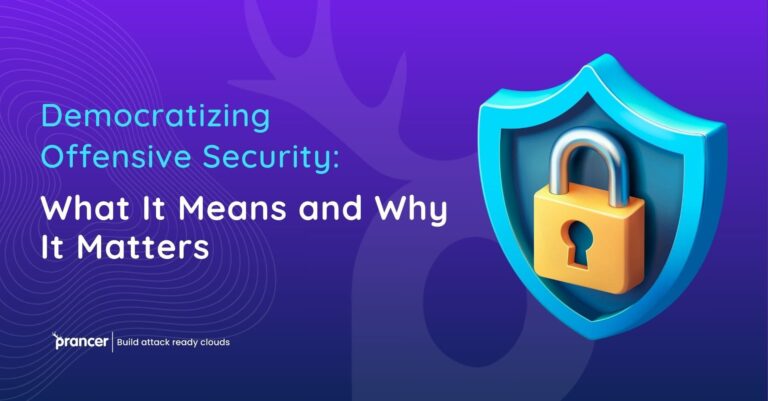

In an age of advanced digital threats, the move towards Zero Trust Architecture is a major step change in cybersecurity strategy. At its heart, Zero Trust Architecture forsakes the traditional “trust but verify” mentality for a more stringent ‘never trust, always verify’ mindset. This change in paradigm is important, particularly for organizations like Prancer that are navigating through a minefield of cyber-threats. Strategies such as automated penetration testing, when embedded alongside a Zero Trust framework enhance the overall security posture of an organization enabling resilient defense against any breaches that could arise.
Zero Trust Architecture is more than just a technology, but rather an all-encompassing approach to network security that it includes various policies.Practice of Zero Trust requires the implementation of various technologies and controls as well. This approach is derived from the fact that trust should never be automatically extended to any entity within and without the network. Prancer takes this approach with the clients through integrating zero trust architecture into its security practices to enhance protection for their instances.
Automated Penetration Testing in Zero Trust Strategies for getting cybersecurity technologies to work seamlessly together are at the top of mind.
Automated penetration testing is a major tool for the implementation of a zero trust model in an organisation. It assists in the ongoing process of auditing and making security more efficient. Prancer uses automated penetration testing to allow simulated cyberattacks on the Zero Trust model for checking if their defense system ispreparedfor a real-world attack.
1- Explicit Verification
Under zero trust architecture, no assumptions are made regarding trust; everyone trying to access resources in the network must first be verified.
Prancer enforces a strong authentication methodology that ensures only authenticated and authorized users or devices gain access to network resources.
2- Least Privilege Access
This principle means giving users the smallest amount of access they need to do their jobs. It is also a good practice to restrict accounts and limit the amount of information that can be accessed by each employee.
The security protocols of Prancer’s zero trust architecture model include least privilege access.
3- Microsegmentation
Microsegmentation is a technique that can be used on software configured networks to do just this – split the network into smaller zones, so gaining access to one part of the network does not give you immediate and unrestricted unwarranted access to other parts. This restricts a hacker’s ability to move sideways through the network.
Today, Prancer is a strong proponent of microsegmentation which has become an integral part of their zero trust architecture that significantly improves network security.
4- Assuming Breach
It assumes that a breach has already occurred or will most likely occur and therefore takes in security from a more proactive manner.
Prancer, for example – Prancercise advocates an omnipresence so that there is constant watchfulness and preparedness.
5- Continuous Monitoring and Response
Under zero trust architecture, real-time detection and response to anomalies is only feasible if there are continuous monitoring of network and user activity.
Continuous monitoring is one of the key tenets in the adoption and implementation of zero trust framework, where an organization integrates tools for quick response to strange or suspicious activities.
6- Security Automation and Orchestration
Automated security processes and orchestration of threat response are also key aspects of zero trust architecture. This makes sure that the issue of security-related violation is handled with more efficiency and speed.
Prancer’s zero trust model offers its security operations efficiency and effectiveness through employing automation and orchestration.
7- Data-Centric Security
The main aim of zero trust architecture is to ensure data security. This includes encryption of data, both in transit and at rest as well as strong access controls.
Prancer maintains robust data-centric security, covering the entirety of its zero trust framework to guard client’s data tightly.
Conclusion: How Zero Trust Can Help Us Move Towards a More Resilient Future
Therefore, zero trust architecture is not a bunch of tools or policies but rather the whole comprehensive approach to cybersecurity. Adopting its principles can help organizations transform their security approach in the era of ever-evolving cybersecurity threats. By adopting the zero trust architecture and incorporating automated penetration testing in its suite of products, Prancer is dedicated to offering state-of-the-art cybersecurity solutions that will pave the way for a more secure digital future characterized by resilience.
